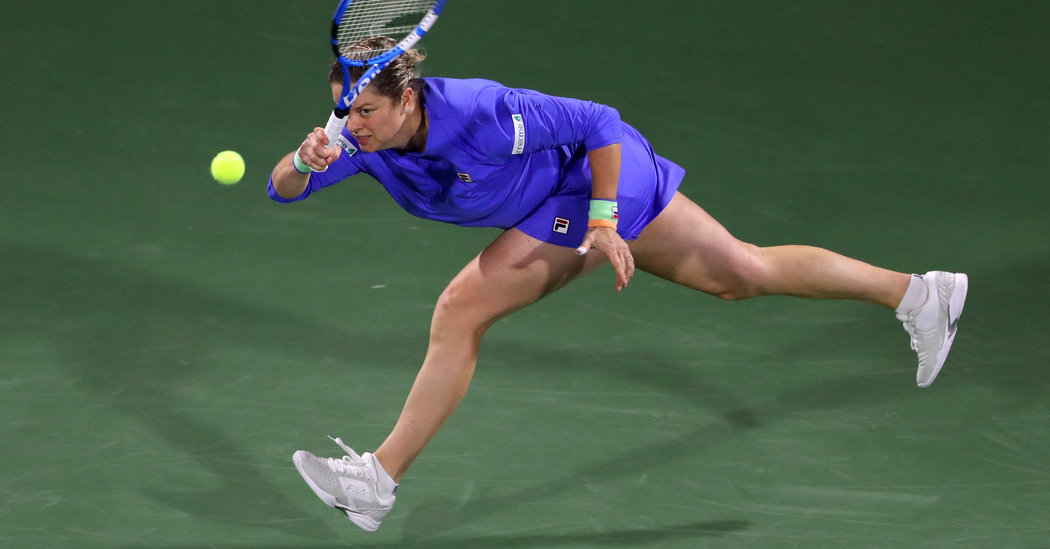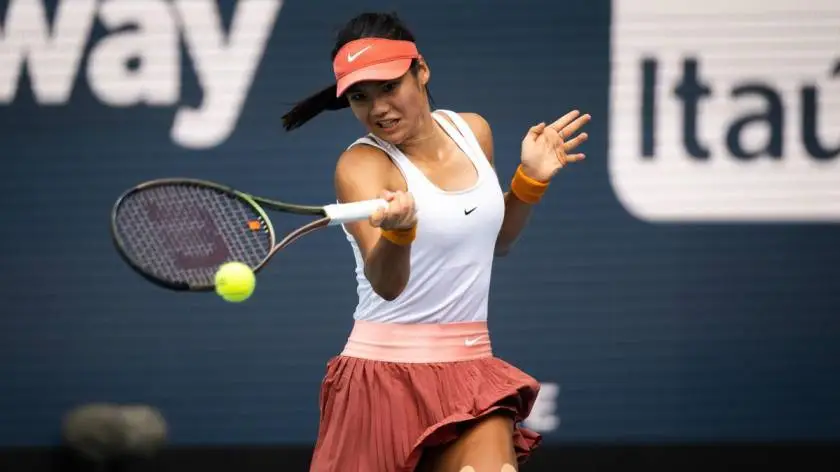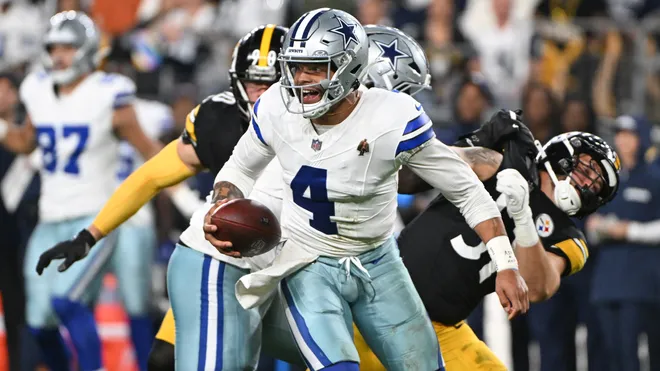
Kim Clijsters Begins Comeback With a Promising Loss
After nearly eight years away, Kim Clijsters, now a mother of three, returned to the tennis tour on Monday.
She lost in straight sets in the opening round of the WTA event in Dubai, but her 6-2, 7-6 (6) defeat to Garbiñe Muguruza felt more like a triumph than a letdown.
There were signs of rust, including 10 double faults. But how could there not be, considering Clijsters played her last official singles match in August 2012, when Muguruza was still a teenager?
More intriguing, there were big hints that Clijsters could still hold her own at this elite level. A four-time Grand Slam singles champion, Clijsters remains a world-class ball striker, capable of producing easy, rhythmic power from all sections of the court. She also remembers how to build a point with method and confidence and, more important, finish what she has constructed.
She even performed a couple of splits as she defended to her forehand side — not quite the full splits that were her trademark at her peak but not bad at all at age 36.
“I’m sure she’s going to get better and better and for sure give us a lot of trouble,” Muguruza said. “I think she played really well after all these years.”
Clijsters certainly made it tricky for an in-form, in-the-moment opponent on Monday, rallying from a 0-3, two-break deficit in the second set to transform a comeback curiosity into a genuine duel.
“It was sort of two matches,” said Pam Shriver, the longtime pro and ESPN analyst. “At 2-6, 0-3, I was concerned for Kim and thinking, why start at such a big tournament when she would benefit so much by playing at a lower level and not against someone quite of the quality of Muguruza? But then something clearly clicked in.”
Muguruza, a former No. 1 and two-time Grand Slam singles champion, is on a rebound of her own at age 26 after a prolonged tailspin. She navigated a tough draw to reach the Australian Open final this month, where she lost to Sofia Kenin in three taut sets.
Muguruza’s desire to rise again is unmistakable, apparent in her nervous energy and eagerness to play the next point. Though her second serve remains an adventure, her first serve is back to being a penetrating, match-winning weapon.
It was the key against Clijsters, who struggled to produce fast-twitch returns when she needed them most. Still not completely back to her former playing shape, she was slow at times to react to her backhand side and was off rhythm at times on the stretch or at the net.
But she was rarely overwhelmed against one of the tour’s flattest, most aggressive hitters. That bodes well for the tournaments ahead.
“I had a good feeling out there,” Clijsters told reporters at her post-match news conference, saying she felt reassured that she could handle Muguruza’s pace. “She’s probably not the hardest hitter out there. There’s some girls that hit the ball a lot harder. I felt like I was able to go toe-to-toe with her from the baseline.”
What was also reaffirming was that she was able to surprise Muguruza from the baseline, producing angles and patterns that left her lunging or leaning the wrong way.
“If she stays healthy and she plays herself into shape, she will expose many players’ weaknesses by her ability to disguise her shot placement better than this generation,” said Sven Groeneveld, who formerly coached Maria Sharapova. “Kim will be a step slower than she used to be, but other than that I think she is good enough to compensate for the lack of movement or explosiveness. Like Roger has done.”
Roger would be Roger Federer, who will turn 39 in August. Still ranked No. 3 after reaching the semifinals of the Australian Open, he is one of several enduring champions who helped Clijsters believe that another successful comeback was possible.
She has come back before: In 2009, after the birth of her daughter Jada, she won the 2009 United States Open as a wild card, and Jada helped her celebrate in Arthur Ashe Stadium, in one of the more touching moments in tennis history. Clijsters went on to win the 2010 U.S. Open and 2011 Australian Open, and she returned to No. 1 before retiring again in September 2012 to support her husband Brian Lynch’s career, expand their family and let her injuries heal.
It is a grinding, physical game at this level, full of high-impact rallies and significant jet lag, and Clijsters will try to manage it after several years away and with a host of new personal demands.
She will pick her spots judiciously, helped by the fact that the WTA now allows unlimited wild cards for former No. 1 players. She is not required to play a full schedule, but plans on competing next month in Monterrey, Mexico, and Indian Wells, Calif.
A fifth Grand Slam singles title seems like too much to ask for, considering all the talented contenders from different generations currently in the women’s game. But based on Monday’s evidence, a deep run is not out of the question if Clijsters can remain healthy, dial in her second serve and readjust to playing tough back-to-back matches.
“A couple of times I was watching the rallies and rubbing my eyes and saying, ‘This is like 12 years ago,’” Shriver said. “It’s such a different conversation than it could have been with what happened in the second set. And so this continues in my mind to be one of the most intriguing times in women’s tennis in the 40-some-odd years I’ve been involved. It’s the mix of people, ages, geography, everything. There are so many great stories.”
Clijsters returning in style certainly would qualify as a great one. For now, she is 0-1 but off to a promising start.








